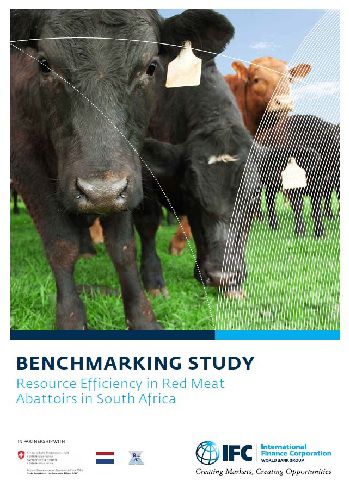Water scarcity, greater water demand and changes in water supply due to climate change are severely affecting large parts of Southern Africa, including South Africa, posing a significant risk to the region. South Africa’s red meat abattoir industry is a key driver of economic growth, as it contributes to value addition, job creation and exports. However, increasing water scarcity, combined with rising costs of energy and fuel, is threatening the competitiveness and sustainability of the sector. The red meat abattoir sector consumes about 10 percent of the total water consumption in agri-processing, excluding pulp and paper. The sector could significantly reduce the use of water and other resources, which would improve its cost base and environmental footprint, increase the competitiveness and sustainability of abattoirs, and enhance their export potential.
The “Benchmarking Study: Resource Efficiency in Red Meat Abattoirs in South Africa” provides an in-depth resource efficiency analysis of the beef, pork, sheep and goat meat agri-processing sub-sectors in South Africa. It is accompanied by a “Practical Guide for Improving Resource Efficiency in Red Meat Abattoirs in South Africa,” which identifies and summarizes common resource efficiency opportunities for red meat abattoirs in South Africa. The study, conducted by IFC, in partnership with SECO, the Red Meat Abattoir Association, and the Netherlands, assessed 21 red meat abattoirs of various sizes, species and geographical locations in South Africa. The study identified the potential for the red meat industry to reduce water consumption by up to 28 percent, which would save the country up to 1.25 million cubic meters of water a year. The study also found that there is potential for the industry to reduce energy consumption by up to 24 percent, which could reduce South Africa’s energy consumption by up to 92,000 MWh a year.